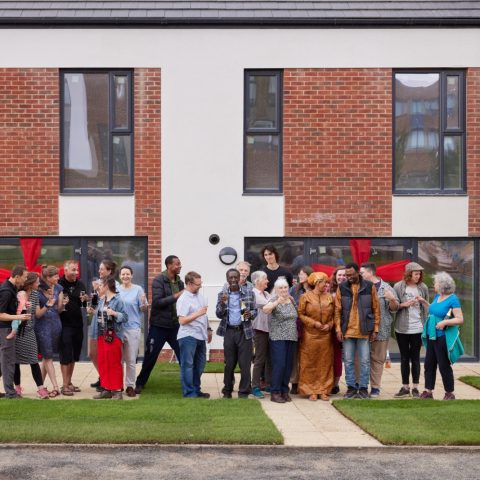RAIN’s story
Since detailed records began in 2012, there have been a staggering 350 flood incidents reported by communities within the boundaries of two river catchments: Harpers Brook in North Northamptonshire and Wootton Brook in West Northamptonshire.
Traditional ‘hard’ engineered flood schemes – such as building artificial embankments and barriers, dredging and digging flood relief channels – are not viable in this area (based on engineering analysis and flood data modelling) and so a more innovative approach has been taken to build flood resilience in each catchment.
The RAIN project is taking a holistic approach, implementing and assessing flood resilience measures at three different levels: across the overall catchment area, within specific communities, and within properties.
At catchment level, the team is working with the natural landscape – with marshy areas, shallow ponds and wetland sites – to slow the rate at which water runs off the landscape, with the aim of helping to reduce the flood risk to communities downstream.
At a community level, RAIN is working closely with residents to provide training, run events and offer volunteering opportunities to improve people's preparedness and resilience.
At an individual property level, RAIN is supporting property owners to understand their personal flood risk and use appropriate Property Flood Resilience measures to help improve their preparedness and recoverability in the event of a flood.
Useful learnings from RAIN
Local farmers and landowners involved in Natural Flood Management (NFM) schemes across the two Northants catchments play a huge role in long-term flood resilience of the area, through tree planting, wetland creation and innovative water management practices. Involving these stakeholders is essential if an integrated flood management plan is to succeed.
A holistic approach combines ‘resistance’ measures to mitigate floodwater entry with ‘preparedness’ at both the property and community levels, and ‘recoverability’ strategies to reduce disruption when floods occur. Another way to think about these three elements is that resistance is more about strengthening what’s already been put in place, preparedness focuses on what you can do in the present, and recoverability looks ahead at what you can do to make your property and community more resilient to future flood events.
Preparedness is often the forgotten piece of the puzzle. It isn’t just about education but also extends to integrating and maintaining flood protection measures as part of everyday life. For example, by checking and maintaining equipment, and practising deployment in advance.
Recoverability is about 'building back better' to make properties and the local area more resilient to flooding going forwards. Beyond repairing damage, this involves making smart choices for the future, such as opting to rebuild with flood-resilient materials, raising the level of fixtures and electrics, and incorporating features like self-closing air bricks.
RAIN’s metrics
Reduced volume and rate of water run off across the catchment, based on the natural flood management techniques. Community and property owner feedback on readiness. Improved recovery rates.







